Ben Griffiths: Why this “most loathed rally” still has room to run
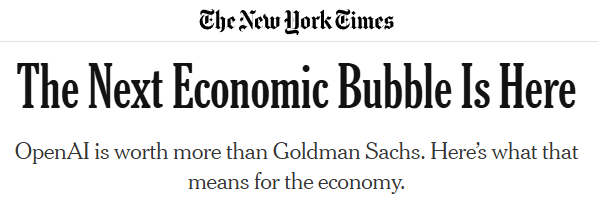
2025 is shaping up to be the year of the “everything rally” - but every second headline now screams that what goes up must come down.
From equities to property and the queues at Martin Place, asset prices have climbed on a wave of optimism that inflation is tamed, rate cuts are around the corner, and money printing will keep growth humming. Yet for every new high, there’s a warning about bubbles or an inevitable correction.
Ben Griffiths, Managing Director and Senior Portfolio manager at Eley Griffiths Group, has seen this cycle of euphoria and dread before - and he’s not joining the chorus of caution.
“It's not my first bubble. From where I'm sitting it seems everyone is seeing bubbles" he says.
That line sums up the great paradox of 2025: a market everyone loves to hate, yet one that refuses to crack.
A calm credit market underpins the rally
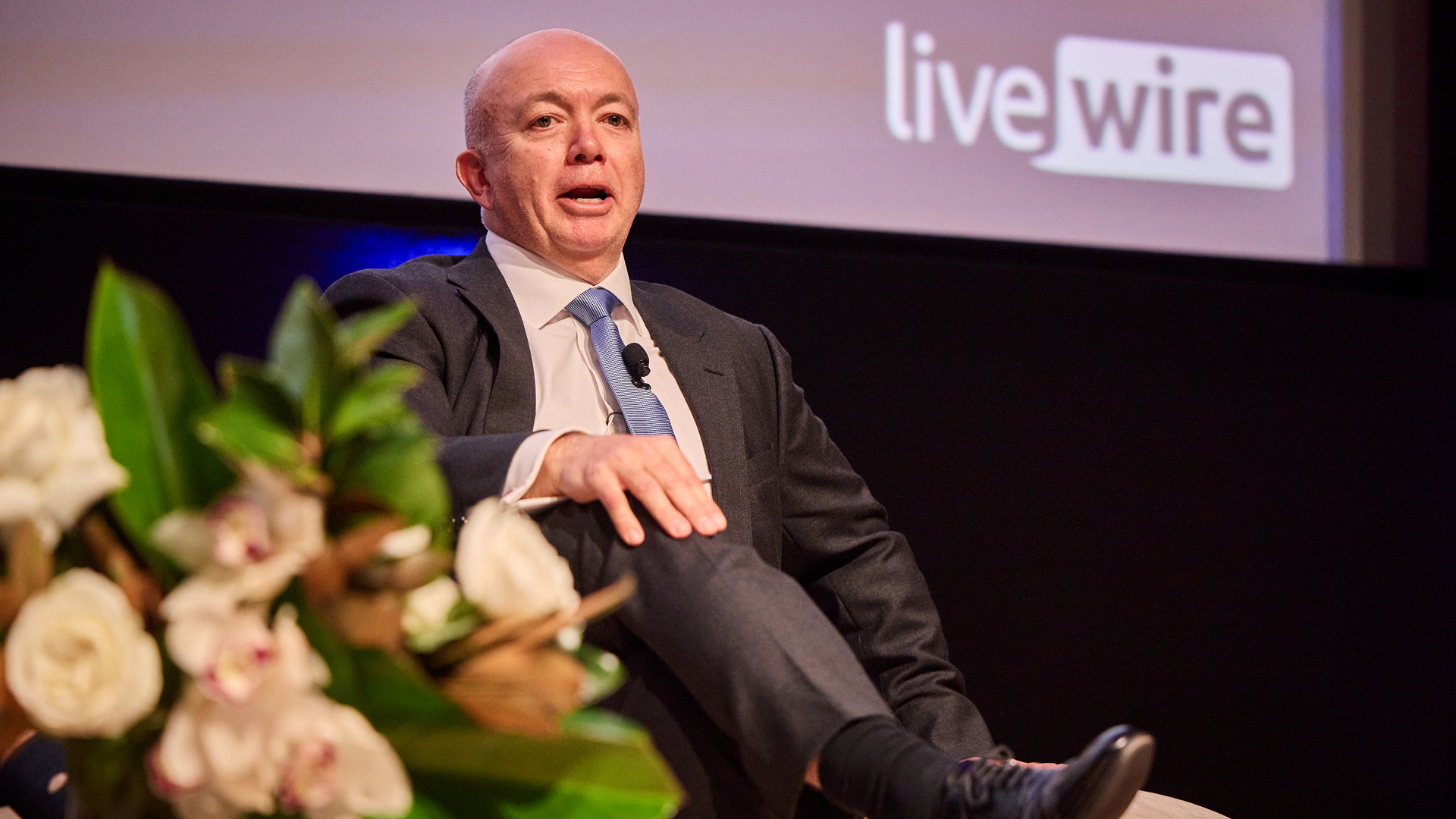
If markets were truly at risk of breaking, Griffiths says we’d see it first in the plumbing - not in the headlines.
“Before I swim in stocks, I always look at credit spreads. They’ve been extraordinarily benign and historically tight," he says.
Credit spreads, as shown in the chart below, remain near cyclical lows - and from a multi-decade perspective, they’re beginning at very tight levels. That calm, Griffiths says, reveals what professional investors really think: that balance sheets are strong and systemic risk is low.
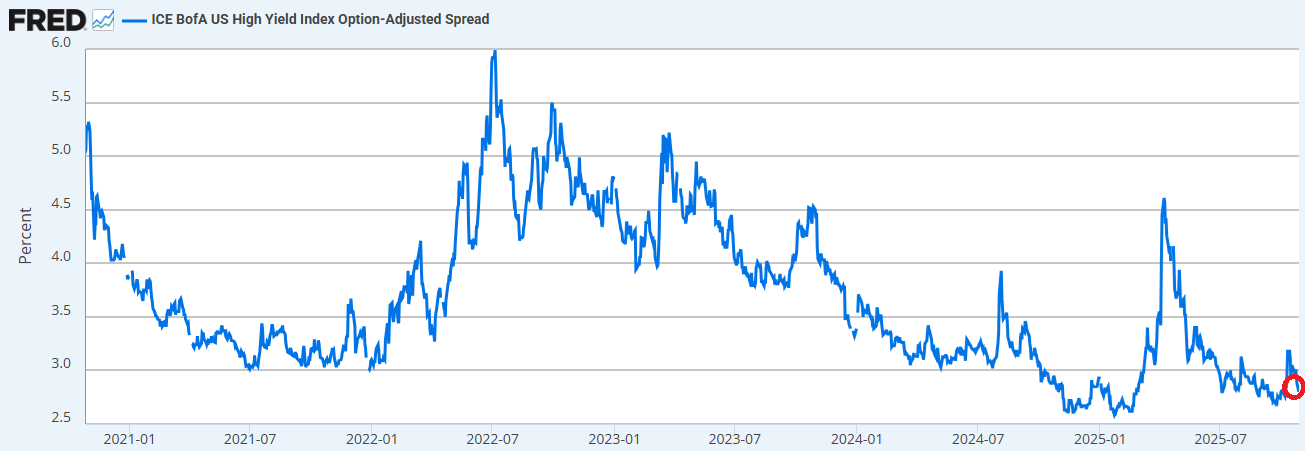
“There’s a calmness and steadiness in credit that tells you the backdrop’s about right. If the professionals were genuinely worried, spreads would be blowing out," says Griffiths.
Even in the U.S., where valuations have drawn scrutiny, he points to evidence of strength rather than excess.
“The S&P 500 is on about 22 times earnings for FY26. That’s above the long-term average, yes, but the quality of businesses today - their profitability, balance sheets, and cash generation - is far better than in previous cycles," he says.
"You don’t sell new highs"
For all the talk of a top, Griffiths says investors forget a simple truth about momentum: markets that make new highs tend to keep making them.
The proof, he notes, is in the price action. The S&P 500 has surged from 6,600 to 6,900 in just five trading sessions, while the Dow now sits within striking distance of the 50,000 mark — milestones few predicted at the start of the year.
“You don’t sell new highs - you buy them,” he says.
Data compiled by the Bank of New York Wealth Division supports this view, showing that since 1950, the S&P 500 has historically generated strong 1-, 3-, and 5-year forward returns after reaching a new all-time high.
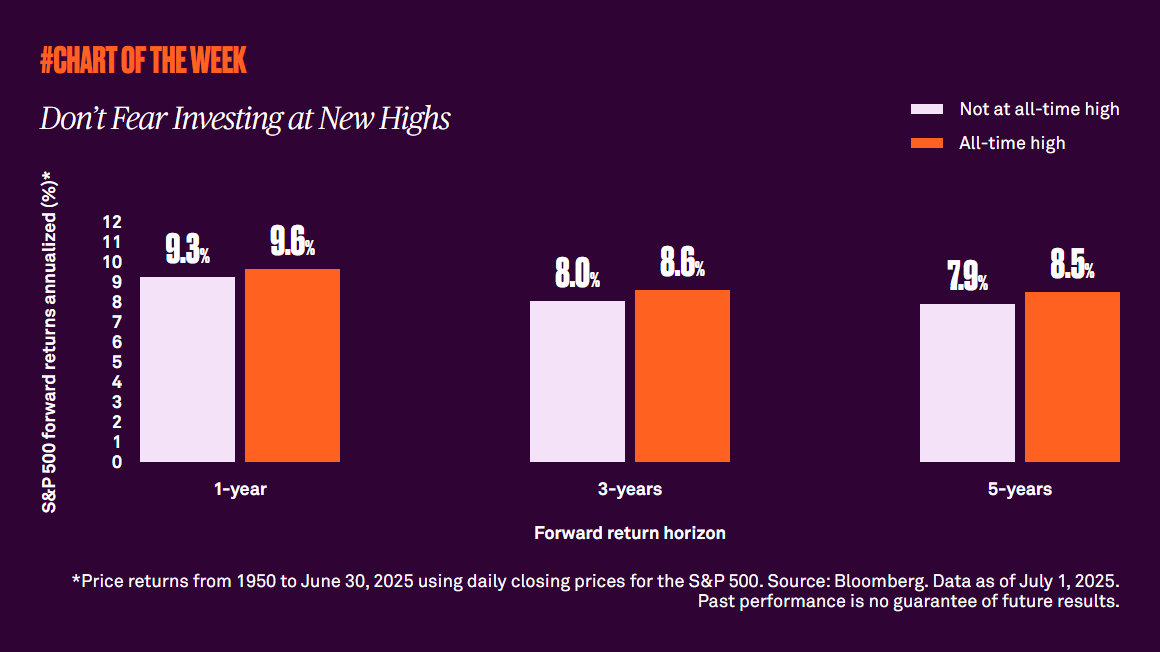
And with U.S. earnings season about to kick into gear, Griffiths believes the numbers will determine whether this strength can hold. Results from Big Tech heavyweights - Alphabet (NASDAQ: GOOG), Microsoft (NASDAQ: MSFT), and Meta Platforms (NASDAQ: META) - land tomorrow, followed by a wave of reports from roughly half of the S&P 500 next week.
“The earnings story in the U.S. looks largely intact. If that’s confirmed next week, it’ll reinforce the durability of this expansion," he says.
Until then, Griffiths is content to stay constructive.
The absence of euphoria
The real paradox of the past three years, Griffiths says, is how unloved this rally has been.
“It’s one of the most loathed rallies I can recall. It’s been running for three years; people have hated it, tried to dance on it, doubted it at every turn. Yet it keeps confounding the sceptics," he says.
He points to the absence of any true euphoria.
Yes, the U.S. IPO market has reopened, and a few speculative pockets - from crypto-linked micro-caps to non-profitable tech funds - have shown flashes of what he calls “irrational vivacity.” But across the broader market, sentiment is still cautious.
He points to the latest American Association of Individual Investors (AAII) survey, which shows only 37% of investors are bullish - hardly a sign of mania. "That’s bang on the long-term average. That’s not mania. That’s normal," says Griffiths.
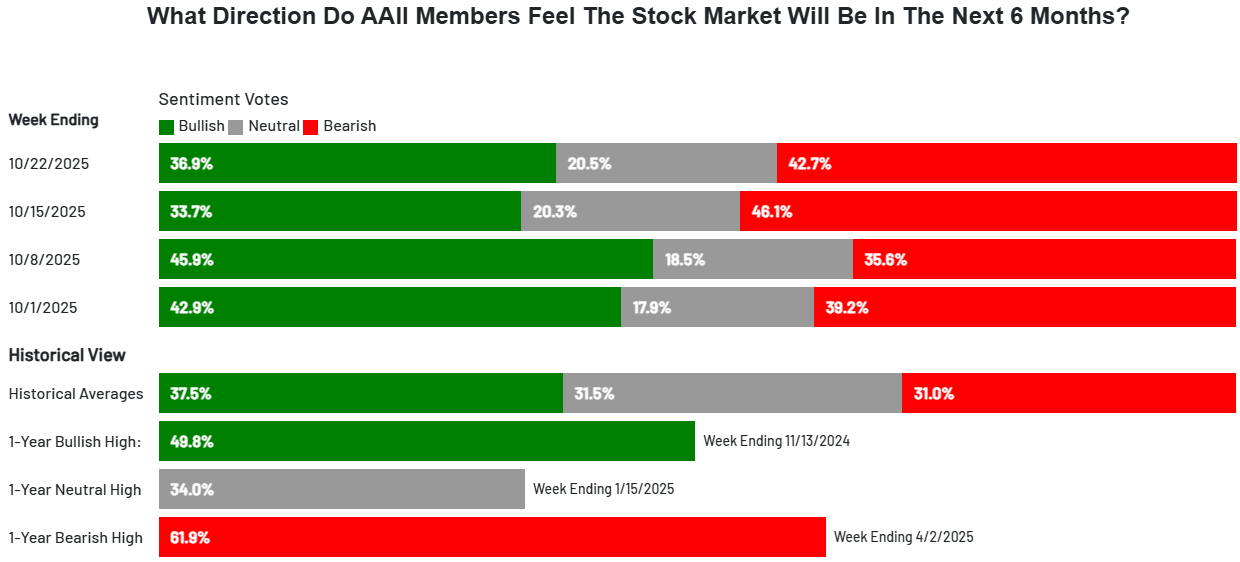
Two factors that could spoil the party
Griffiths identifies two forces that typically end bull markets: exhausted earnings growth and a shift in central-bank policy from easing to tightening. Neither, he argues, is on the horizon.
“Earnings momentum hasn’t stalled, and the Fed isn’t hiking,” he says.
“So as much as people can bubble-spot or death-ride the advance, there aren’t many variables keeping me awake at night.”
He’s particularly dismissive of the idea that the rally is purely liquidity-driven or speculative.
“Corporate profitability remains healthy, cash flows are strong, and credit spreads are tight - that’s not the stuff bubbles are made of,” he says.
If anything, the presence of so many “bubble-spotters” might be the best insurance against a genuine bubble.
Where the best opportunity is right now
Having addressed the macro, Griffiths turns to market structure — and a healthy signal in what he calls the “broadening” of leadership.
“Every bull market starts with the big safe names and, by the time conviction has returned, you start to see interest return to small companies,” he says.
And that interest is returning with a bang. European small-cap indices are up close to 30% this year, Canada’s TSX small-cap benchmark has surged almost 40%, and even the once-sluggish Russell 2000 in the U.S. has started to close the gap on the S&P 500. Locally, the Small Ords Index is up more than 20%.
The driver, he argues, is universal: easier monetary policy, improving earnings, and a renewed willingness among investors to take risk.
“Central banks are moving to accommodate and ease rates versus what we saw back in ’22 when they were hiking. That’s supporting interest in smaller companies," he says.
In Australia, the opportunity versus large caps looks particularly attractive. Despite delivering far stronger earnings growth - around 28% forecast EPS growth for FY26, compared with roughly 5% for the ASX 100 - small caps still trade at a 7% discount to their large-cap peers.
For Griffiths, that combination of better growth and cheaper valuations marks the beginning of what he calls the “salad days” for small caps — the sweet spot where opportunity meets renewed optimism.
“The cat’s out of the bag - money has moved out and is chasing down better price-for-growth outcomes," he says.


3 topics
1 fund mentioned
1 contributor mentioned
